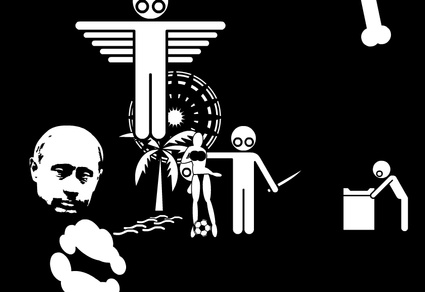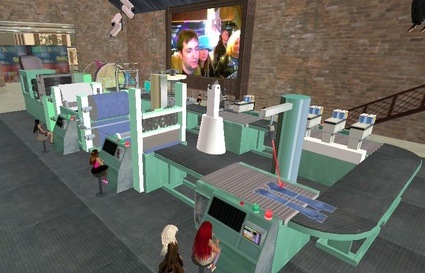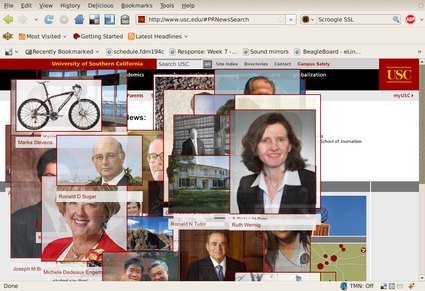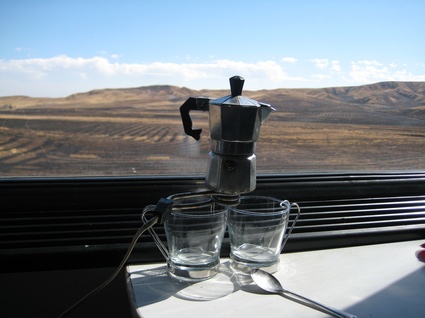The National Museum of Contemporary Art (EMST) in Athens is currently hosting the painfully timely online exhibition Esse, Νosse, Posse: Common Wealth for Common People.
 Michael Bielicky & Kamila B. Richter, Falling Times, 2007-2009 (real-time news translation machine representing appearing and disappearing information about our times)
Michael Bielicky & Kamila B. Richter, Falling Times, 2007-2009 (real-time news translation machine representing appearing and disappearing information about our times)
Curated by Daphne Dragona, the open platform takes a critical look at the economy of the network society and the tension between, on the one hand, a wealth of information, knowledge, code, communication freely provided by web users and on the other hand the market’s attempts of to appropriate and exploit it.
A virtual sweatshop, a game opposing copyright and free exchange of knowledge, a documentary about gold farmers, a subversive web browser software, internet art for poor people , etc. Esse, Νosse, Posse offers a thought-provoking mix of artists’ projects commenting on the new forms of networked economy, platforms based on exchange and collaboration everyone can contribute to and a series of statements and texts by researchers, critics, theorists discussing art, networks and economy.
In her curatorial text Dragona lists some of the issues at stake:
How is this new common wealth then formed? What are its mechanisms of development and support and which are the new forms of economy that emerge? What is the importance of new terms frequently mentioned such as the attention economy or the gift economy and of phenomena such as the sweatshops, the crowdsourcing or the merging of free and working time? Can free and open source software and knowledge exchange play a significant role?
“Esse, Nosse, Posse: Common Wealth for Common People” focuses on “posse”, on the mode of production and being not only of the creators presented within this context but of all the contributors of today’s common wealth , as well as on the possibilities of re-appropriation of knowledge that may occur only through knowledge itself.
 Jeff Crouse & Stephanie Rothenberg, Invisible Threads, 2008 (a sweatshop inside Second Life)
Jeff Crouse & Stephanie Rothenberg, Invisible Threads, 2008 (a sweatshop inside Second Life)
 Nicholas Knouf, MAICgregator, 2009 (a Firefox extension aggregating data about colleges and universities embedded in the military-academic-industrial complex)
Nicholas Knouf, MAICgregator, 2009 (a Firefox extension aggregating data about colleges and universities embedded in the military-academic-industrial complex)
So far, i’ve spent at least a couple of hours going through the projects, platforms and texts collected in Esse, Νosse, Posse. I also caught up with Daphne Dragona, the curator of the platform. And i had just one question for her:
This is not the first time you curate an online exhibition for the Museum of Contemporary Art in Athens. I’d be interested to know more about your experience on this particular issue. How do you make this platform successful? How can an online exhibition reach the usual museum audience?
Esse, Nosse, Posse, Common Wealth for Common People follows last year’s Tag Ties and Affective Spies, also hosted in the website of the National Museum of Contemporary Art. The two exhibitions connect on purpose actually as they both relate to the digital networks discussing principal questions and issues around their structures and their functioning. Tag Ties and Affective Spies aimed to present critical approaches by artists on the very features of the social media whereas Esse, Nosse, Posses focuses on the issue of networked economies and today’s user generated common wealth.
Esse, Nosse, Posse is however more a platform rather than an exhibition. I saw it as a chance to discuss ideas, notions and opinions and not merely as an opportunity to present online art . For this reason, except for “net art” works, also videos, texts and collaborative platforms are included as initiatives that comment on the topic of common wealth in various ways. Moreover, the platform is open, anyone having a relevant project can submit it , enriching the content. It is an ongoing presentation of resources, of ideas, of inspiring efforts.
From this point of view, this platform will be considered successful if people can learn things from it, share the data and use it, if the works and texts by the contributors meet new audiences, if new collaborations and ideas are born through it. I do not know yet if this happens or if it will happen but my aim was to include interesting content against the info – noise of the social web.
 Kate Rich, Feral Trade Courrier, ongoing. (A live shipping database for a freight network running outside commercial systems(
Kate Rich, Feral Trade Courrier, ongoing. (A live shipping database for a freight network running outside commercial systems(
In any case, “success” does not get any easier when you do online projects . The National Museum of Contemporary Art the last few years has shown an interest and a commitment for digital and internet culture. The online exhibitions are also hosted in the physical space of the museum but it takes some time to trigger visitors’ curiosity and interest. Some people are still very hesitant when confronted with computers in an exhibition space. Even if technology is part of their everyday lives, even if they are connected at home and at work, still in a museum they are reserved. Maybe it’s the remains of the white cube culture but this issue is still open for a country like Greece. On the other hand, no one expects visitors to spend an hour viewing an online exhibition in the museum. The point is rather to get informed and follow online activities at their own place and time. The virtual space does not negate the physical one of the museum or the opposite; they interconnect but different opportunities are given in each case.
Thanks Daphne!
Other exhibitions curated by Daphne Dragona: Tag ties & affective spies, a critical approach on the social media of our times, Mark Amerika retrospective at the National Museum of Contemporary Art in Athens. She also co-curated Homo Ludens Ludens.
Related: Homo Ludens Ludens – Gold Farmers, The Bank of Common Knowledge.
